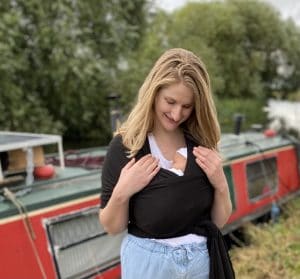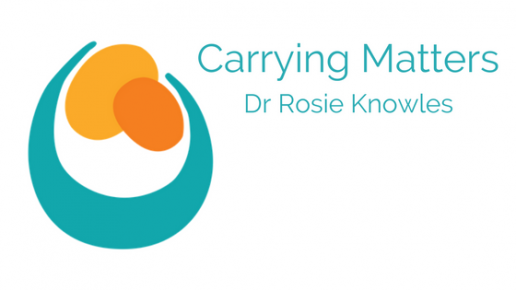Carrying Culture & Congenital Heart Disease
Abbie (abbies_mind) and I came across each other on Instagram and I was captivated by her photos and her story about how slings helped her and her family when their little boy was born with a congenital heart disease. I asked her if she’d like to share her experiences to encourage other families in a similar situation.
How did you come across babywearing and how did it help?

In the run up to this, I’d heard about the benefits of skin to skin, closeness and carrying on the overall well-being of a baby. In general, but especially in the fourth trimester.
The uncertainty of not knowing when I was going to be separated from my breastfed baby, how long that would be for and what his early stages of heart failure were going to look like, was a frightening time for my husband and I. We began babywearing as soon as we came out of hospital.
When you have a poorly baby and you don’t know the next time you may be able to be close to them, hold them, pick them up, cuddle and just be next to them, carrying them and getting as much skin to skin as possible felt like a calling.
Using a sling and carrier for our baby felt like a type of protection. A reassurance that we were going to be there for him. Whatever he was going to go through. When I was pregnant this is when for me, my baby felt safest. Inside me where his heart was okay and protected by my body. The outside world was an unknown but with the knowledge his health would deteriorate prior an operation, it was scary. Being able to carry him in a sling replicated the feelings of pregnancy for me and judging by how peaceful he was in there, for him too!
What challenges did you find with using a sling while he was unwell?
I wish I’d have found some support using the Boba wrap more in the beginning of our carrying journey. Especially when our baby had his nasogastric tube in and we had to be extra careful not to catch it on anything and were unsure which side to face him out in. Tucked in where it was placed inside cautiously and we’d hope not to accidentally tug on it? Or placed outside the wrap where we could see it clearly and be mindful not to knock it? We weren’t entirely sure, but tried both methods and managed well.
One thing I was excited to ask the doctors before we left hospital post surgery was, “when can use the carrier again”, because I was eager to get back that time we had apart. We were advised we had to wait 6 weeks before trying tummy time or lifting him from under his arms and so we waited the same amount of time before we used a carrier again but enjoyed some contact napping in between. Every baby with CHD and their recovery will be different, so I’d say it’s important to check with your healthcare provider before for their recommendations.
How does carrying him help you now?
Our little boy is now 9 months old, post surgery and thriving. He still loves the carrier and we don’t plan to stop using it anytime soon. Carrying was, and is, an important part of how we coped with his diagnosis before the surgery, and remains a heart warming joy, to see him in transformed health, spirit-fully exploring his surroundings from the comfort of being close to us.
What carriers have you used?

My little boy is half Zimbabwean and in Zimbabwe, carrying babies using a kanga is common practice for keeping baby close to you, as well as for general transportation and carrying out chores. It’s a cultural norm for babies and their caregivers and something I always wanted to try.
I have only just started carrying him in the kanga on my back but my mother-in-law does with him when she is with him (she is in our Covid bubble). When he is awake we mainly face him out in the buckle carrier, and facing into us when napping, but I want to try using the kanga when I get my confidence up with using it.
Do you have any advice for anyone else curious about babywearing?
If you have reservations about babywearing I’d recommend seeking support from someone with experience at your local sling library; and if your baby has a special condition, do ask a professional babywearing expert.
Whether you choose to babywear or not, cherish the closeness and absorb the oxytocin!
Thank you Abbie!
_________________________

